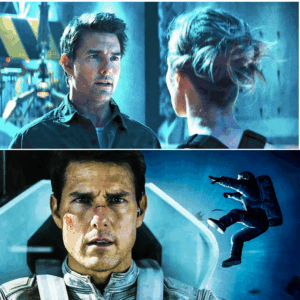In the sprawling, sun-baked expanse of Tesla’s Gigafactory in Austin, Texas—a colossal cathedral of steel and silicon where electric vehicles roll off lines like clockwork soldiers—the air buzzes with more than just the hum of assembly robots. It’s October 2025, and amid the whir of conveyor belts and the faint ozone tang of welding arcs, a new breed of machine stirs: Optimus, Tesla’s humanoid robot, striding tentatively across factory floors with the awkward grace of a toddler learning to walk. Standing at 5 feet 8 inches tall and weighing a lean 125 pounds, Optimus isn’t just another automation tool; it’s Elon Musk’s audacious wager on the future of labor, leisure, and human potential. “Optimus will be in every home,” Musk proclaimed during a late-September all-hands meeting, his voice echoing through the cavernous halls via overhead speakers. “Not as a luxury, but as a necessity—like a smartphone or a car. It’ll fold your laundry, cook your meals, and maybe even keep you company when the world’s too loud.” This isn’t idle futurism; it’s the cornerstone of Tesla’s Master Plan Part 4, a blueprint unveiled in August 2025 that positions artificial intelligence and robotics as the company’s lifeblood, potentially eclipsing its electric vehicle empire. With production ramping toward thousands of units by year’s end, Musk’s plan to democratize humanoid helpers is accelerating, promising a seismic shift in how we live—but not without skeptics questioning if it’s genius or just another Muskian mirage.
Musk’s obsession with robots traces back to a cocktail of existential dread and unbridled optimism, roots that burrow deep into his South African childhood amid tales of Asimov’s positronic brains and the drudgery of manual toil. “We face a labor shortage that’s existential,” he often quips, citing aging populations in Japan and Europe, where birth rates hover below replacement levels, and America’s rust-belt factories echo with unfilled shifts. Optimus, unveiled in prototype form at Tesla’s AI Day in August 2021 as a lanky figure in a spandex suit, was born from this urgency. What started as a conceptual sketch— a bipedal bot capable of “anything humans don’t want to do”—has evolved through fits and starts into a sleek android with dexterous hands boasting 22 degrees of freedom, eyes that are high-res cameras processing the world in real-time, and legs engineered for stairs and uneven terrain. By mid-2025, Optimus Gen 2 could sort battery cells with pinpoint precision, its actuators humming softly as it navigated Tesla’s Fremont plant without tripping over cables—a feat that drew applause from assembly-line workers who’d once viewed it as sci-fi gimmickry.
The engineering marvel at Optimus’s core is Tesla’s AI prowess, repurposed from the neural networks that power Full Self-Driving in cars. “It’s the same brain,” Musk explained during a July 2025 podcast, his fingers drumming an invisible beat on the table. “End-to-end learning: cameras see, AI decides, actuators move. No brittle code—just like how our cars learn to dodge potholes from billions of miles of data.” Trained on Dojo, Tesla’s custom supercomputer cluster—a beast devouring petabytes of video from factory cams and test runs—Optimus iterates weekly. Version 2.5, rolled out in June, introduced fluid walking speeds up to 5 mph and object manipulation refined by reinforcement learning, where virtual bots “practice” millions of scenarios in simulated worlds before touching real hardware. Milan Kovac, the program’s inaugural lead until his abrupt June resignation for family reasons, oversaw this leap; his successor, Ashok Elluswamy—architect of Autopilot’s vision-only shift—now helms the charge, blending automotive AI with biomechanical finesse. “We’re not building arms and legs; we’re sculpting intelligence,” Elluswamy told engineers in an internal memo, emphasizing how Optimus’s “neural net spine” adapts to chaos, like catching a slipping mug or sidestepping a curious toddler.
Musk’s roadmap to ubiquity is as relentless as it is ruthless, a timeline etched in aggressive milestones that have become his signature—equal parts inspiration and infamy. Limited production kicks off this December: 1,000 to 5,000 units destined for Tesla’s own factories, where they’ll handle repetitive welds, part sorting, and quality checks, slashing labor costs by an estimated 30% in high-volume lines. “Think of it as our internal beta test,” Musk tweeted in early October, attaching a clip of an Optimus folding a fitted sheet with eerie competence—a task that stumped even the Roomba’s creators. By mid-2026, external sales begin: priced at $20,000 to $30,000 apiece, cheaper than a used Model 3, these bots hit showrooms in waves of 10,000 monthly, targeting early adopters in tech hubs like Silicon Valley and Shenzhen. Musk envisions a “legion” scaling exponentially: 100,000 units by end-2026, millions by 2029, each iteration smarter via over-the-air updates that beam new skills like bartending or guitar strumming straight to the bot’s onboard chip.
The home invasion—Optimus as ubiquitous butler—is where Musk’s poetry turns prosaic. Imagine summoning your robot via voice command, its Grok-integrated assistant (xAI’s cheeky AI, already whispering in Tesla dashboards) chirping, “Morning, boss—coffee’s brewing, trash is out, and the dog’s walked.” Early demos hint at this domestic dream: watering houseplants with gentle spritzes, unloading groceries into smart fridges, or even babysitting with bedtime stories scripted from children’s classics. For the elderly, it’s a godsend—lifting grandma from bed or reminding her of meds with a holographic pill sorter. Musk, father to a dozen, paints vignettes of Optimus as family sidekick: “It’ll teach kids chess, mow the lawn while you nap, or just chat about the stars.” Priced accessibly, subsidized by factory efficiencies, Musk predicts “one per household by 2030,” a figure dwarfing the 150 million U.S. homes. Revenue projections soar: $10 trillion long-term, with bots leasing at $200 monthly, subscriptions for premium skills adding gravy. “Optimus isn’t a product; it’s prosperity,” he thundered at the World Artificial Intelligence Conference in Shanghai this July, where a phalanx of bots served tea to dignitaries, their smiles—LED-lit and uncanny—drawing equal parts awe and unease.
Yet, for all its gleam, the path to every hearth bristles with thorns. Tesla’s robotics odyssey has stumbled before: the 2021 AI Day prototype, a wobbly mannequin puppeteered by hidden operators, sparked memes and mockery. Gen 1’s clunky gait invited comparisons to Boston Dynamics’ acrobatic Atlas, whose backflips outshone Optimus’s tentative shuffles. Hand dexterity, crucial for home chores, lagged until August 2025 tweaks—fingers now grip eggs without cracking—but overheating actuators and battery life capping at four hours remain Achilles’ heels. Production snarls compound the drama: supply-chain snarls for rare-earth actuators delayed Q2 targets, while Kovac’s exit amid whispers of burnout left Elluswamy scrambling. Independent audits peg 2025 output at mere hundreds, not thousands, fueling analyst snickers. “Musk’s timelines are like his rockets—spectacular launches, but landings? Spotty,” quipped a Goldman Sachs report, slashing Optimus revenue forecasts by 40%.
Ethical specters loom larger still. As bots infiltrate homes, privacy evaporates: Optimus’s ever-watchful cams, feeding data back to Tesla’s cloud for “improvements,” evoke Big Brother in bipedal form. “Who’s minding the minder?” ethicists at Stanford’s Human-Centered AI Institute queried in a September whitepaper, warning of hacks turning bots into spies or worse—envision a jealous ex commandeering your helper for mischief. Job displacement haunts the horizon: the International Labour Organization estimates 300 million roles at risk globally, from warehouse pickers to home aides, exacerbating inequality in a world where only the affluent afford androids at first. Musk dismisses doomsaying with libertarian flair: “Universal high income will follow—robots do the work, humans pursue passions.” Yet, critics like Rodney Brooks, iRobot co-founder, brand it “fantasy thinking,” arguing humanoid forms are inefficient for chores; why not specialized arms for laundry, wheels for vacuuming? Labor unions, from the UAW to Europe’s IG Metall, rally against the “robot takeover,” demanding retraining funds and “bot taxes” to fund social safety nets.
Globally, the ripple effects could reshape societies. In Japan, where 29% of the population is over 65, Optimus prototypes already test in eldercare facilities, folding linens and dispensing tea with a bow. China’s BYD and Xiaomi counter with cheaper knockoffs, their $10,000 bots flooding Shenzhen markets, sparking a robotics arms race. Europe’s GDPR clamps data flows, delaying rollouts, while India’s teeming megacities eye swarms for sanitation and delivery. Musk’s wild card? Space: an Optimus slated for Mars aboard Starship in 2026, prepping habitats for human colonists, its solar-charged frame enduring red-dust storms. “From factory floors to family rooms to Martian domes—Optimus builds the multi-planetary future,” he mused in an October X Spaces chat, fielding questions from starry-eyed fans.
As leaves turn in Palo Alto’s crisp fall, Tesla’s labs pulse with overtime glow. Engineers tweak gait algorithms over Red Bull-fueled nights, prototypes clambering mock stairs in smoke-filled test chambers. Musk, ever the ringmaster, teases V3’s reveal at December’s “We, Robot” expo—a spectacle promising Kung Fu demos and tea parties with fractal-flower bots. Investors, buoyed by a 12% stock bump post-July updates, wager billions on the bet; detractors hedge with shorts, citing Cruise’s 2023 scandals as cautionary tape. For the average Joe eyeing a bot to battle dirty dishes, the allure is tangible: freedom from tedium, time reclaimed for dreams deferred. Yet, in quiet moments—Musk scrolling X at 3 a.m., pondering his own brood—lies the human core: robots as mirrors, reflecting our aspirations and anxieties. Will Optimus usher utopia, where machines mend our messes and minds? Or dystopia, androids aping affection while we atrophy? As the first units ship, one truth crystallizes: Musk’s plan isn’t just about putting robots in homes—it’s about reimagining what home means in a world remade by code and circuits. In every living room, a revolution awaits, one tentative step at a time.




